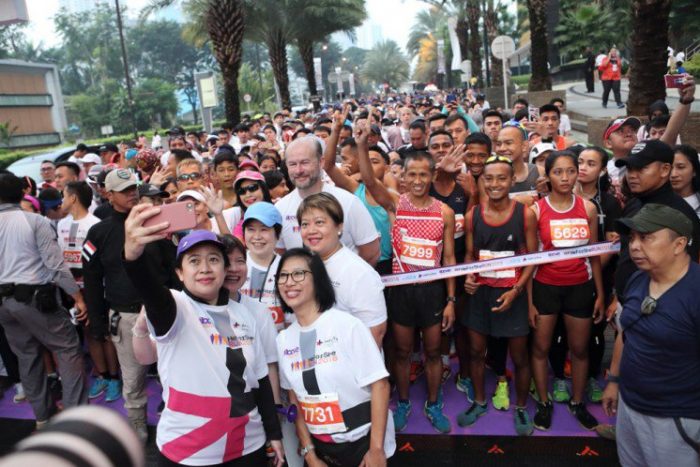HeForShe: The role powerful men play in the push for gender equality

With gender representation at the top and in boardrooms still skewed in favour of men, movements like HeForShe are now at the centre of the workplace gender equality conversation. It is no longer adequate for only women themselves to advocate for their cause. As with all other fights for equality, allies have also become an instrumental part of this push for change.
In businesses today, more men still hold power positions as compared to women. It was with this in mind that the HeForShe campaign, created by UN Women, was launched in 2014. HeForShe invites men – at work and across all areas of life – to build on the work of the women’s movement as equal partners, crafting and implementing a shared vision of gender equality that will benefit all of humanity.
This past weekend, the Indonesia Business Coalition for Women Empowerment, together with UN Women, hosted the HeForShe Run 2018 in downtown Jakarta, which saw over 5,000 runners turn up.
“It is for this reason that IBCWE (hosted) the HeForShe Run as a way for runners to show that they are willing to be sportive and support gender equality in the workplace and the economic empowerment of women.”
Female leaders at spirit producer Diageo, which is holding its very own #PressForProgress event at its Singapore office as part of International Women’s Day on March 8, emphasise that the time has come for men to be involved with their cause.
“More and more men are understanding of what it’s like to be a working mum because they’re married to working mums. It would be wrong of us not to bring men into the conversation, they have to be a part of the solution,” says Annmarie Phillips, Channel Director On Trade, ROI, Diageo.
Gráinne Wafer, Baileys Global Brand Director, recalls an old experience with a former male boss that would motivate her to break through the glass ceiling on her own terms.
“Very early on in my career, a guy I was working for said: ‘the only thing stopping you going all the way to the top is the fact you want a family.’ And I looked him in the eye and I said: ‘well why would it stop me, it didn’t stop you?'”, she shares.
Male leaders share their thoughts
To mark this important occasion, HRM Magazine Asia spoke to several senior male executives who hold chief decision-making positions across various organisations in the region, about what men can and should do to help drive the “press for progress” further along.
Kevin Chow, CEO at Thales Singapore, says it all starts with male leaders understanding the benefits of having diversity.
“In many organisations, men still hold a majority voice in the boardroom. To be more inclusive towards women, men need to be strong public advocates and to lend their support in getting more women in their leadership teams.
“Male leaders need to build a supportive workplace that recognises the contributions that women bring– including alternate approaches to problem-solving and a more collaborative communication style,” says Chow.
He adds that the company is doing well in those respects, with one-third of the Thales Executive Committee in Singapore and over 30% of its 700-strong workforce being women.
“We believe that diversity drives results and innovation, and we are committed to raising that further.”
The fight for gender equality is as much a moral responsibility for men as it is for women, says Derrick Chang, CEO, PSB Academy.
“Should we desire to accelerate the pace of female representation within the leadership pipeline, then greater advocacy and action amongst men within and outside of the workplace is imperative,” says Chang.
“Amidst the relentless push for more female mentors and role models, the same should be expected from members of the opposite sex.”
To that end, Chang says the focus must be on removing masculine stereotypes to groom a new generation of male leaders who are less entrenched in attitudes and beliefs perpetuated by a patriarchal society. Instead, these future CEOS should recognise the value of investing in equal opportunities for both women and men.
“Encouraging heterogeneity in the leadership pool means greater diversity of thought, which in turn leads to improved problem solving and lucrative societal and business gains,” he says.
We also asked HR thought leader Marcus Buckingham, who is on the cover of our March 2018 issue, for his thoughts on the topic – one that is close to his heart. Buckingham, who once appeared on the Oprah Winfrey Show for an episode dedicated to women at work, says a lot still needs to change on this front, in light of all the workplace harassment revelations last year.
“Certainly one of them is helping women know that they have more power than they think to identify where their real strengths lie independent of men or anyone else. Once you know that, you start to own your own power,” he says.
And even if “the road to hell is paved with good intentions”, it’s always good to start somewhere – and where else better than right at the top.
Check out the rest of our International Women’s Day 2018 coverage here!






